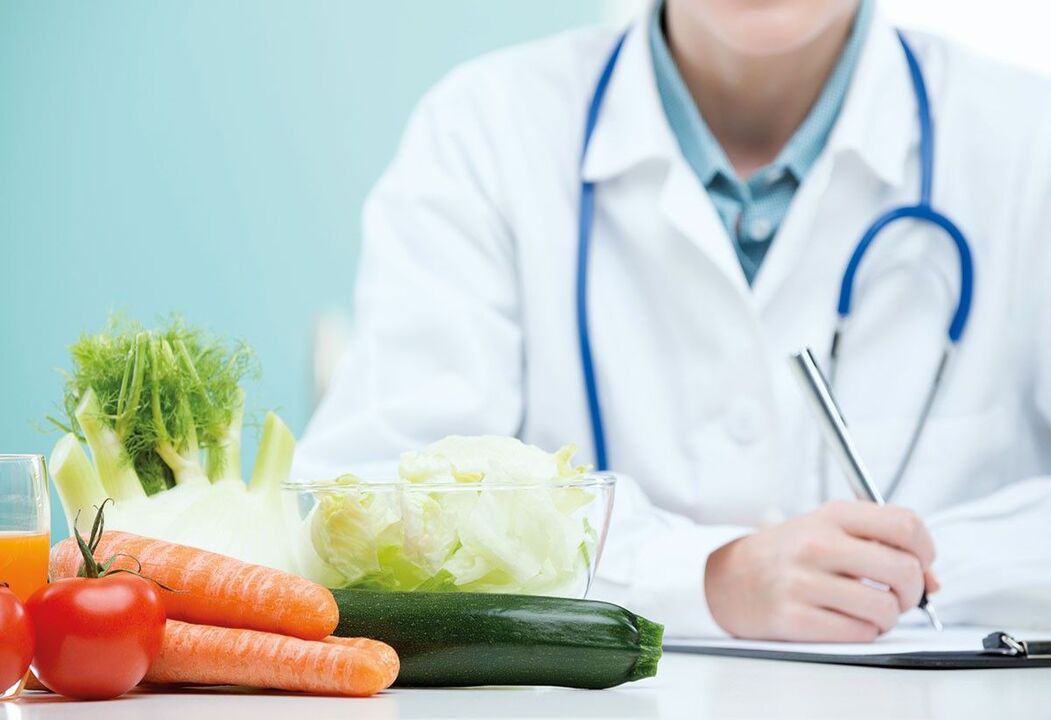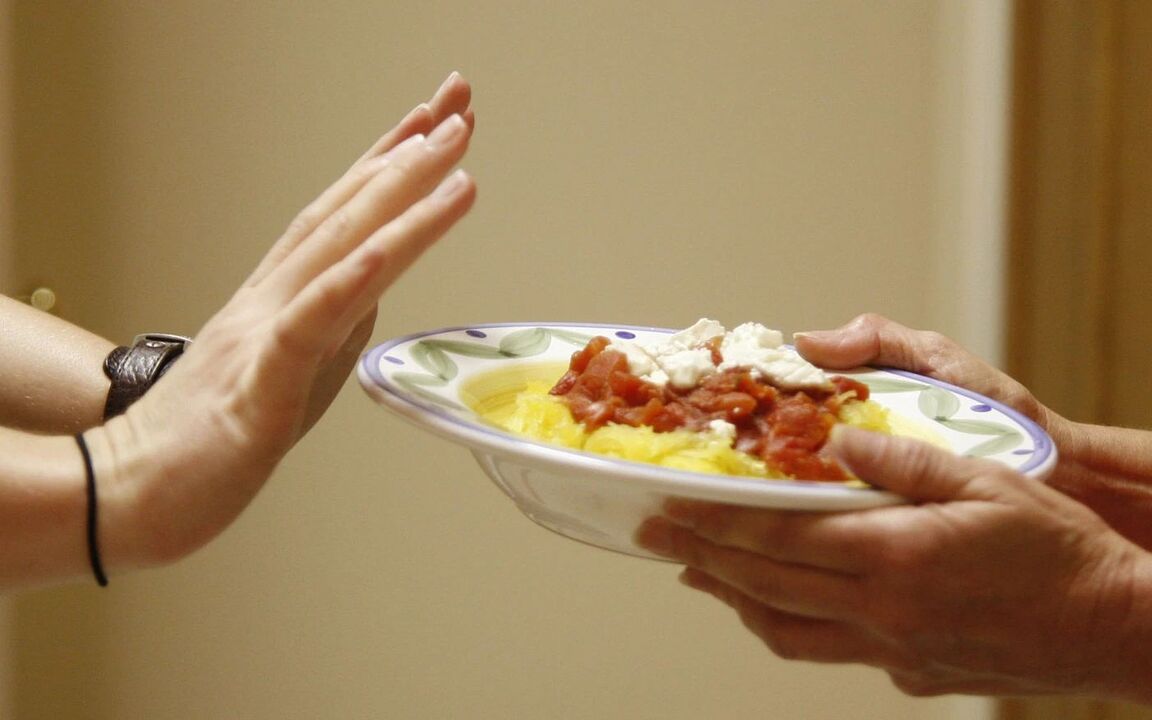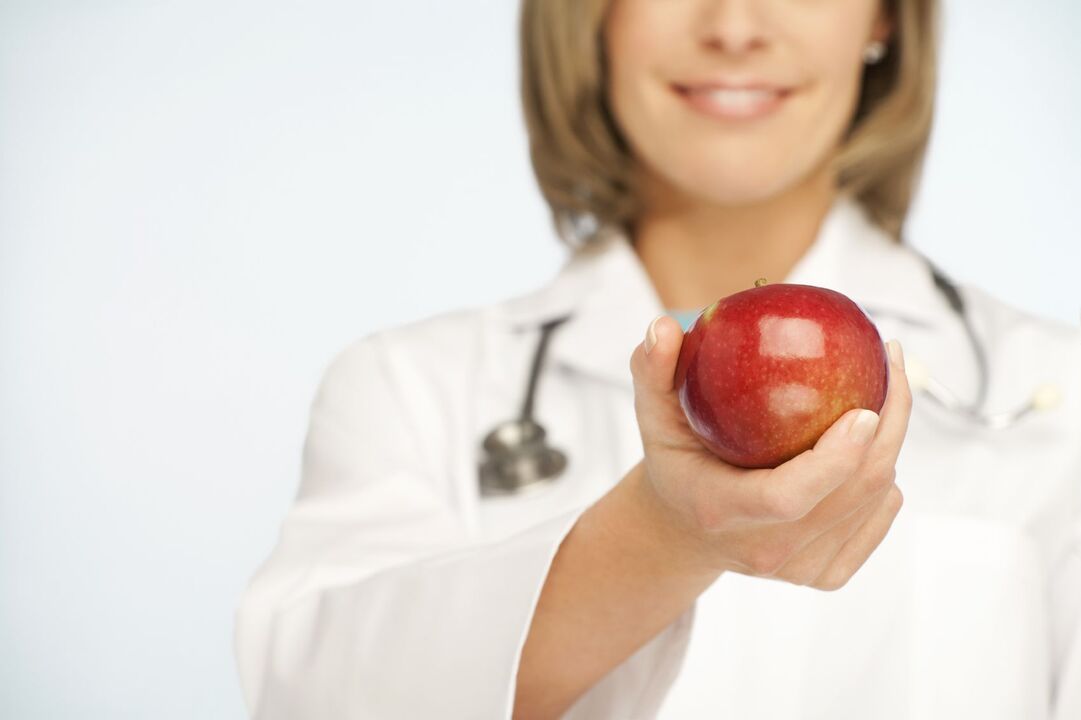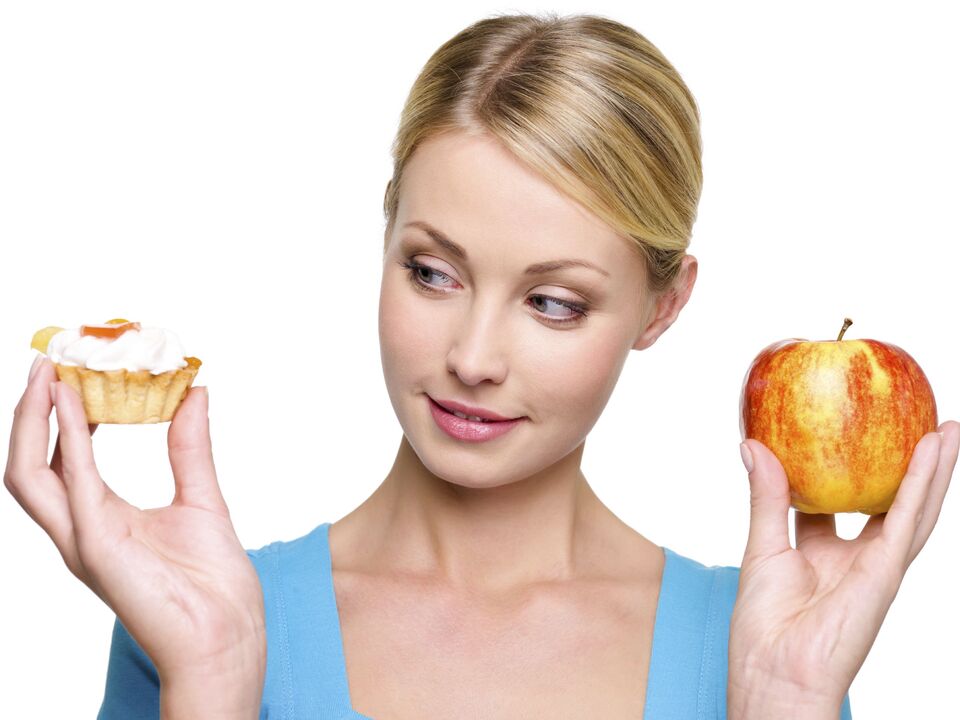
Pancreatitis is a disease of the pancreas caused by inflammation of the organ. The disease has a number of distinct symptoms, including pain, and therefore needs adequate treatment. If measures are not taken to eliminate the symptoms, pancreatitis progresses, the pathological process spreads to the nearest organs, pancreatic enzymes "digest" the peritoneum, and its cells rapidly die. Delayed treatment leads to death. 25% of patients, ignoring the disease, become disabled.
The course of pancreatitis is possible in several forms.
Acute. The development of acute pancreatitis occurs rapidly and suddenly. Patients do not pay attention to a slight tingling in the side, but after a couple of days they do not get out of bed due to sharp pains and other clearly expressed symptoms. Acute pancreatitis may result in complete recovery, the development of chronic pancreatitis, or the death of the patient from complications.
Chronic. For a long time, the patient lives with periods of exacerbations and improvement in health (remissions). Medicine is powerless in the fight against the disease; it is impossible to achieve a complete cure for chronic pancreatitis. The state of stable remission is the goal for patients, since inflammation may not bother for years. For life with pancreatitis, the diet is prescribed to all patients with chronic pancreatitis.
A separate form can be distinguished acute recurrent pancreatitis. This type of disease in terms of symptoms resembles chronic pancreatitis, but recurrence occurs more often than after 6 months. If similar symptoms occur after six months, these are signs of chronic inflammation.
Causes of the disease
Violation of the pancreas occurs due to damage to the tissues of the organ. Pancreatic pancreatic juice consists of trypsin, lipase and other digestive enzymes that easily break down proteins, fats and carbohydrates that enter the body.
In cases where pancreatic juice does not enter the intestine, it acts inside the gland, the process of "self-digestion" develops. Enzymes break down their own tissues. Under their influence, some of the cells die, the rest are resistant to digestion, inflammation of the pancreas begins.
The outflow of pancreatic juice is disturbed under the influence of the following factors:
- mechanical (drinking excessive amounts of alcohol, smoking, malnutrition, cholelithiasis, abdominal trauma);
- hereditary predisposition;
- autoimmune diseases (lupus erythematosus, arthritis);
- stress.
Nutrition for pancreatitis in adults

The nutrition system does not provide for the use of heavy and fatty foods. The diet for pancreatitis, which the doctor prescribes, is based on the principles of proper nutrition. Patients are advised to eat small meals 5 times a day. Unhealthy foods will forever have to be excluded from the diet. In diseases of the pancreas, it is necessary to eat mainly protein foods, and it is better to minimize the intake of fats and carbohydrates.
Compliance with a diet without disruption is possible when compiling a menu for the week ahead. When compiling a diet, the following recommendations are taken into account:
- do not skip meals (eat every 3-4 hours);
- eat in portions of 150 g;
- grind food if it can irritate the mucous membrane;
- it is better to choose dishes with a high protein content;
- forever forget about the excessive consumption of fats and carbohydrates;
- refuse dishes with a high content of extracts;
- with severe pain, refuse food for two days.
It is much more difficult to maintain such a diet for a sweet tooth, because they cannot eat their favorite sweets, cakes and cookies.
How to eat right with acute pancreatitis

Acute pancreatitis is called inflammation of the pancreas, which develops under the influence of various factors. This form of the disease needs medical supervision. According to statistics, 40% of patients die from the diagnosis of acute pancreatitis. The disease is dangerous because it develops so rapidly that it is almost impossible to avoid complications. Properly selected therapy and timely medical care prevent undesirable consequences and lead to a complete cure for the patient.
Treatment of pancreatitis is based on a strict diet, which should never be broken, especially after surgical treatment of pancreatitis. It is necessary to adhere to the prescribed recommendations for the rest of your life, since only proper nutrition can protect the patient from relapses of the disease. The diet for acute pancreatitis is characterized by excessive rigor and consistency.
In the first two days after the onset of the disease, the patient abstains from food (starvation diet). To maintain the body, elements, vitamins and minerals are administered intravenously in the form of special solutions. After the removal of acute pain symptoms, liquid food is added to the diet. The attending doctor, analyzing the patient's condition, indicates how much to follow the diet.
An example of a daily diet for patients with acute pancreatitis:
| Breakfast | omelet, weak tea |
| Snack | cottage cheese, rosehip broth |
| Dinner | lean soup, melon jelly |
| Snack | cottage cheese 0%, tea with milk |
| Dinner | fish cakes, vegetable puree |
| late dinner | a glass of fat-free kefir |
When choosing products for the menu, patients with acute pancreatitis should carefully study the labels in order to avoid the use of preservatives, dyes, flavors, and stabilizers.
Diet in the chronic form of the disease

Any chronic disease for a long time may not bother the patient, but there are periods when remissions are replaced by acute attacks. 50% of exacerbations occur in the so-called "spring-autumn" off-season. The cause of the attacks is a violation of the diet and the use of alcoholic beverages. Alcohol is the main enemy for patients suffering from pancreatic diseases.
In the acute stage, the patient is not allowed to eat food for three days, in other cases liquid crushed dishes are allowed. In severe attacks, the patient should be immediately hospitalized, prescribe the necessary treatment and apply parenteral nutrition.
During periods of exacerbations of mild and moderate severity, patients are recommended to drink rosehip broth, but not more than 50 ml per hour.
The list of products allowed for chronic pancreatitis is provided by diet No. 1, No. 5p. According to the recommendations of the doctor, the diet is replenished with new products. At the same time, attention should be paid to your own sensations and reactions of the body. The first pain symptom is a signal to refuse the "heavy product"
Sample menu for the day for patients with chronic pancreatitis:
| Breakfast | mashed potatoes |
| Snack | skim cheese |
| Dinner | oatmeal soup, milk tea |
| Dinner | protein omelet |
| late dinner | curd soufflé |
A diet for chronic pancreatitis helps to eliminate the exacerbation of the chronic form of the disease.
The main rule is that the pancreas should rest from heavy food.
Diet in remission of chronic pancreatitis

During the remission period, the patient feels relief and does not experience pain. Excellent health of the patient allows you to expand the range of permitted products. However, you should not relax either, because the pancreas can still respond negatively to some products.
Diet No. 5 should be taken as the basis of nutrition at the remission stage, adding more easily digestible proteins and vitamins to it:
- fractional nutrition;
- boiled, baked, steam dishes;
- consumption of at least 150 g of protein per day, mainly animal;
- varied menu;
- minimizing animal fats;
- grinding and chewing food.
Patients suffering from pancreatitis lead an active lifestyle. They should think over the menu for each day. Hot lunches (soup, fish soup, borscht) and light snacks (yogurt, banana) are considered ideal. Being at corporate parties, parties, do not hesitate to clarify the composition of the proposed dishes. Do not eat unfamiliar delicacies, so as not to break the diet and not provoke exacerbations.
Pregnancy and pancreatitis

Many women of childbearing age suffer from chronic pancreatitis, so pregnancy and childbirth must be taken with all responsibility.
The pancreas is not an obstacle to the conception of a child and does not adversely affect its intrauterine development.
Problems arise in the acute form of the disease or at the time of attacks of chronic pancreatitis. In such cases, drug treatment and a strict diet are prescribed, because of which the child may not receive the amount of vitamins and elements necessary for his life.
Patients with pancreatitis should be regularly observed by a specialist and plan pregnancy at the time of complete remission of the disease. During an exacerbation of pancreatitis, it is better not to even think about conceiving a child for the following reasons:
- Pregnancy is a double burden on the female body. For 9 months, all chronic diseases, including pancreatitis, become aggravated in women.
- Medicines that are used to treat pancreatitis are categorically contraindicated during pregnancy and lactation.
An exacerbation of pancreatitis has the same symptoms as toxicosis: vomiting, nausea, fever, abdominal pain, so in no case should you endure these symptoms. If you have at least one of them, you need to see a doctor and talk about your problems.
You should not self-medicate, because not only the life of the mother, but also the child depends on it. Treatment with folk remedies should also be left until better times, so as not to risk the health of the baby.
The diet of patients with a chronic form of the disease during pregnancy

For a woman suffering from pancreatitis, pregnancy is not a reason to relax dietary restrictions. On the contrary, adherence to the diet during this period should be under strict control in order to avoid inflammation of the pancreas. It is advisable for pregnant women to adhere to the following recommendations:
- Follow the instructions of the attending physician. The diet for pancreatitis and pregnancy does not differ from the nutritional systems intended for the treatment of the disease.
- The first three months of pregnancy should be eaten according to the menu of the first option of Diet No. 5 (eat boiled food and steamed dishes). From the second trimester, in the absence of visible complications, the diet menu can be gradually expanded.
- Limit consumption of fresh fruits and vegetables. During the remission period, you can eat only bananas, melons, apricots and cherries. Vitamins and minerals that the body receives from fruits and vegetables are replenished with special preparations.
- Suppress the desire to eat salty / spicy / sour foods that occurs in women during the period of bearing a child.
- Eat every 3 hours until you feel hungry.
Pancreatitis in pregnant women is not a sentence; a woman can give birth to a healthy baby. To do this, you must carefully follow the doctor's instructions and carefully monitor your well-being.
Pancreatitis in children. Reasons for development

Oddly enough, but children can also get pancreatitis. The pancreas of the baby is not pressured by alcoholic beverages, malnutrition, however, a number of factors can provoke the development of this "adult" disease.
In childhood, pancreatitis occurs in three forms: acute, chronic and reactive.
Acute pancreatitis in children is manifested, as in adults, due to a violation of the outflow of pancreatic juice. The outflow of juice is affected by:
- received abdominal injuries;
- abnormal development of the pancreas;
- calcifications;
- cholelithiasis;
- diseases due to infection with parasites;
- acute infectious diseases;
- chronic diseases of the stomach, intestines (gastritis, colitis).
Not only self-digestion provokes the development of pancreatitis in children, the causes of the manifestation of the disease are also:
- toxic damage to the pancreas by strong chemicals, poisons;
- malfunctions of the body due to hereditary predisposition.
Acute pancreatitis manifests itself in the form of pain (pain attacks) in the left side of the abdomen or in the center. Children cannot determine the nature of pain, so there are many problems with the correct diagnosis. After an attack, vomiting, dizziness, weakness and fainting are possible. Due to the strong toxic effect on the body, the baby may begin to hallucinate. It is also necessary to pay attention to the color of the skin (it becomes slightly yellowish), the tongue (a white coating appears on it). The inflammatory process provokes an increase in the body temperature of the baby.
Be sure to show the child to the pediatrician, as the symptoms may indicate the development of other diseases.
The children's pancreas actively reacts to any manifestations of pathological processes with inflammation and swelling. Edema is replaced by a decrease in the activity of digestive enzymes. This phenomenon is called reactive pancreatitis. The reason for the development of this form of the disease are:
- inflammatory processes of organs adjacent to the pancreas;
- infectious diseases (viruses, bacteria, fungi);
- malnutrition of the child (lack of breastfeeding, fast foods, improper diet, consumption of unripe vegetables and fruits).
The chronic form in children develops in exactly the same way as in adult patients: abdominal pain in violation of the diet in pancreatitis, nausea after eating spicy, fatty foods, diarrhea, flatulence, deterioration of hair, nails, skin.
Reactive pancreatitis is treatable because the gland cells are damaged in a minimal amount. After the main cause of the disease is eliminated, the pancreas normalizes, and the child can return to his usual way of life. Of course, if you do not influence the course of the disease, it becomes chronic.
Reactive pancreatitis in children is manifested as follows:
- watery stools or chronic constipation;
- bloating;
- flatulence;
- dull pain in the umbilical region.
Nutrition for pancreatitis for children

Children's diet is formed depending on the type of disease. In chronic pancreatitis, a small patient should adhere to the strictest diet at the stage of exacerbation of the disease, and when the pain syndrome subsides, you can switch to a sparing option. Unfortunately, the chronic form of pancreatitis requires lifelong dietary restrictions.
A strict diet for a period of one month is prescribed to a child with acute pancreatitis. Diet number 5 is the most effective nutrition system that allows you to completely get rid of a terrible diagnosis in five years.
Nutrition should be treated extremely carefully, because small deviations delay the healing process.
A diet for reactive pancreatitis in children is observed for at least two weeks after an attack of the disease. In this case, do not limit the child too much. For a complete cure, it is enough to adhere to the principles of proper nutrition appropriate for the age of the baby.
Regardless of the stage of the disease, the menu must be completely excluded:
- smoked and pickled foods;
- fast food;
- spicy, salty, fried;
- products with preservatives, flavors and flavor enhancers.
The diet for reactive pancreatitis in a child allows you to make the following diet:
| Breakfast | mashed potatoes with milk, boiled chicken |
| Snack | cottage cheese pudding, weak tea |
| Dinner | chicken soup, beetroot salad, boiled fish |
| Snack | apple jelly |
| Dinner | yogurt, cracker |
The diet for reactive pancreatitis is based on treatment table No. 5
In acute pancreatitis and attacks of the chronic form of the disease, the child must be hospitalized.
In the first days, the baby is practically not fed through the mouth, but exclusively parenteral nutrition is used. On the second day, if there are no attacks of vomiting, you can give water to drink, but not more than one glass a day. If an attack of pancreatitis passes, then from the third day it is allowed to use thin porridge, mashed potatoes, compotes based on dried fruits, jelly. Gradually, lean soups, omelettes can be added to the diet, and with positive dynamics - boiled beef, chicken. From the second week on the menu, you can already safely include low-fat dairy products, fish and meat, boiled or steamed. A detailed nutrition system is selected by the attending doctor.
During remission, the menu for the child must be expanded depending on the improvement in his well-being. If the pancreas negatively perceives the newly introduced product, it should be immediately excluded. Gradually, the baby in a limited amount can be given freshly squeezed juices, seasonal vegetables, berries. An approximate standard diet for pancreatitis includes protein foods, liquid cereals and white poultry meat. For a while, you need to abandon the use of whole milk, but it is allowed to cook cereals and soups based on it. Small sweet tooth can occasionally be pampered with jam, marshmallows, marmalade.
In order for the therapeutic diet to be effective, you should adhere to the eating schedule - eat every 3 to 4 hours. Make sure that the child does not have long hungry breaks.
The most popular diets and nutrition systems for patients with pancreatitis

Depending on the form of the disease, the patient is prescribed a diet with clearly defined restrictions and a list of allowed foods. When determining the nutrition system, the anamnesis, the body's reaction to certain food groups and the presence of concomitant diseases are taken into account. Pancreatitis rarely develops as an independent disease. Most patients suffer from gastritis, ulcers, hepatitis, gallstone disease, etc. This factor must also be taken into account when drawing up a power system.
The correspondence of the table number and the disease is displayed by a special table:
| Table #1 | Ulcers and duodenal problems |
| Table number 2 | Gastritis and colitis |
| Table #3 | Intestinal diseases, gastritis |
| Table number 4 | Bowel disease, diarrhea |
| Table number 5 | Chronic diseases of the liver, gallbladder and ducts |
| Table No. 5a | Acute diseases of the liver, gallbladder and ducts |
| Table №5p | Pancreatitis |
| Table number 6 | Gout, urolithiasis |
| Table number 7 | Chronic kidney disease |
| Table number 8 | Obesity |
| Table number 9 | Diabetes |
| Table number 10 | Cardiovascular diseases |
| Table number 11 | Tuberculosis |
| Table number 12 | Violations of the functionality of the nervous system |
| Table number 13 | Acute infectious diseases |
| Table number 14 | Urolithiasis disease |
| Table number 15 | General |
Recipes for each table are freely available on the Internet. Which of the diets is suitable for the patient can only be determined by the doctor, after conducting the necessary studies.
Diet number 1 (table 1)
It is prescribed for patients with problems of the gastrointestinal tract. You can start a diet after two weeks after an acute pain attack. Therapeutic nutrition is changed by the doctor only 5 months after achieving a stable remission.
Diet No. 1 puts forward the following requirements for the patient:
- the use of products that are inherent in the area;
- increase in daily calorie content up to 2800 kcal (proteins - 100 g, fats - 100 g, carbohydrates - 400 g).
High-calorie foods can negatively affect weight, so you need to add physical activity.
According to the allowed foods, diet number 1 offers the following menu:
| Breakfast | omelet, cocoa |
| Snack | baked apple |
| Dinner | mashed potatoes, vegetable soup, chicken breast |
| Snack | a glass of warm milk, croutons |
| Dinner | boiled pike perch, mixed vegetables |
The combination of tables No. 1 and No. 5p is an excellent diet for duodenitis and pancreatitis.
Table #3
A diet for pancreatitis with constipation suggests being wary of a large amount of fiber and bran, which provoke pain attacks. Diet #3 is based on eating soft, liquid foods that are low in starch and animal protein. Portions of the patient should be small - no more than 200 g.
The food system allows you to use the following products:
- bran, whole grain bakery products;
- vegetable soups based on chicken, fish broth;
- lean meats, fish;
- cereals;
- boiled chicken eggs, but not more than 1 pc. in a day;
- non-acidic fruits and vegetables;
- vegetable, butter;
- milk, tea, coffee, rosehip decoction, herbal infusions.
In no case should you eat products made from white flour, sticky dishes, confectionery with cream, garlic, coffee, alcoholic beverages.
Approximate menu of Diet No. 3:
| Breakfast | gray bread, lettuce (cabbage, cucumbers), curdled milk |
| Snack | kefir with grated apple |
| Dinner | vegetable soup with meatballs |
| Snack | mousse with berries and pear |
| Dinner | baked fish, stewed cabbage |
Pevzner's diet for pancreatitis (table number 5)
This is a special nutrition system that is actively used during the treatment of diseases of the liver and biliary tract. Diet No. 5p is a modification of table No. 5, modified for patients suffering from pancreatitis.
Diet number 5 for pancreatitis is offered in several versions.
For patients with an acute form of the disease, diet No. 5b is suitable. Also, the menu of this table is attributed to patients during periods of exacerbation of chronic pancreatitis. The diet is prescribed after two days from the onset of the disease, after the end of therapeutic starvation. During this period, the inflamed pancreas needs maximum rest.
Sample menu for the day according to diet No. 5p for pancreatitis:
| Breakfast | oatmeal, rosehip broth |
| Snack | protein omelet, weak tea |
| Dinner | mashed potatoes, boiled chicken breast |
| Snack | cottage cheese 0%, tea with milk |
| Dinner | boiled pike perch, vegetable puree |
| late dinner | a glass of kefir |
Table number 6
This is a diet for gallstone disease and pancreatitis. Difficulties may arise in patients with acute pancreatitis, since the treatment of cholelithiasis (cholelithiasis) involves the use of a large number of vegetables and fruits that irritate the pancreas.
With diet number 6, it is allowed to use:
- vegetarian vegetable soups;
- fruit puddings;
- fresh wheat and bran bread;
- cereals;
- pasta;
- chicken eggs;
- raw vegetables (in every meal);
- fresh fruits;
- vegetable oil;
- weak coffee with milk;
- juices, fruit drinks, kvass.
Diet at home is the main step on the road to recovery. The state of his health and the ability to completely get rid of pancreatitis depend on the patient's self-discipline.












































